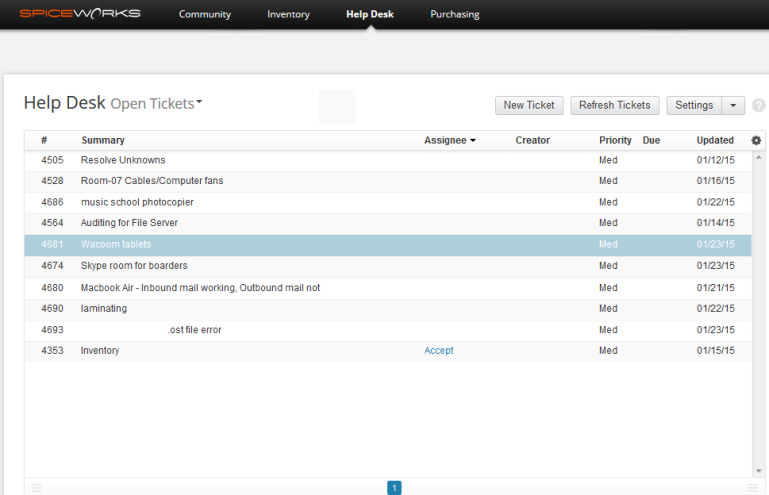Dear Users,
Although this post is informative instead of instructional, I felt it was a worthy topic of discussion as it has been irrefutably helpful in organising, cataloguing and distributing the work in our IT department.
I’ve mentioned it before (in my post: Setting up a Trivial File Transfer Protocol (TFTP) Server) but in our work environment here, we use help desk and ticketing software to manage user requests between the 3 of us. Our chosen software is Spiceworks.
This software has been invaluable when considering its function, cost and practicality. Spiceworks is free for anyone to install and provides a help desk, network monitoring/inventorying and device management (with many more features even still). Through the administration settings, there is a few minor customisation options for modifying the interface as well as the ability to set up an automated an automated ticketing mailbox that generates a ticket with the subject, body and sender.
If you’re not already impressed (you should be!), the interface is sleek and easily navigated with tabs for:
- # Ticket ID
- Summary
- Assignee (whom the ticket is created for or whomever accepts it)
- Creator (of the ticket)
- Priority
- Due (date)
- Updated
Each of these provides enough information to ascertain which ticket is which and although users prioritising their own tickets can often be unhelpful (it can be changed by an Administrator), distributing and prioritising tickets internally between the IT department is extremely helpful and prevents any miscommunication.
Here is an example of our Help Desk (with Assignee’s and Creator’s removed to preserve identities).
As you can see, any ticket that is unassigned can be accepted and are easily distinguished by their summary. Furthermore, there is a sorting function for each tab as expected.
In-addition to helping manage user requests, we also use the Spiceworks Help Desk as a means of cataloguing complex issues to be a point of future reference. In a ticket, the assignee can choose to write a normal response (which will get e-mailed to the creator and updated in their ticket) or write the response as a note (which is hidden comment that only other administrators can see). If the ticket has been difficult to resolve, we will detail our steps as notes and close it (which is stored) so that we can look back to it at for guidance if it persists or rearrises.
Lastly, although I have mentioned it before there’s an available forum online hosted by Spiceworks full of IT professionals that are readily available to help featuring both support for the software and just about anything else IT related you can think of! I am especially fond of the Water Cooler section which features general topics and discussions (usually tech-related).
Max
